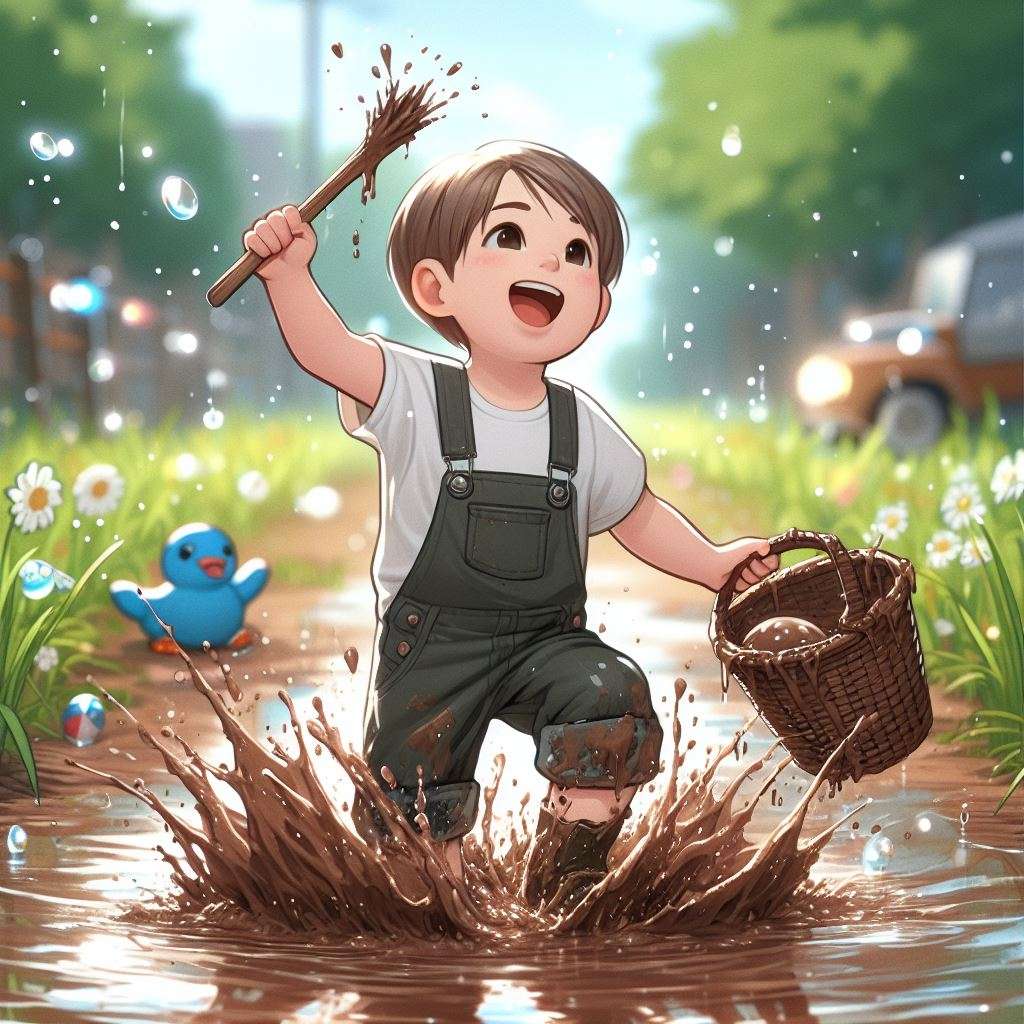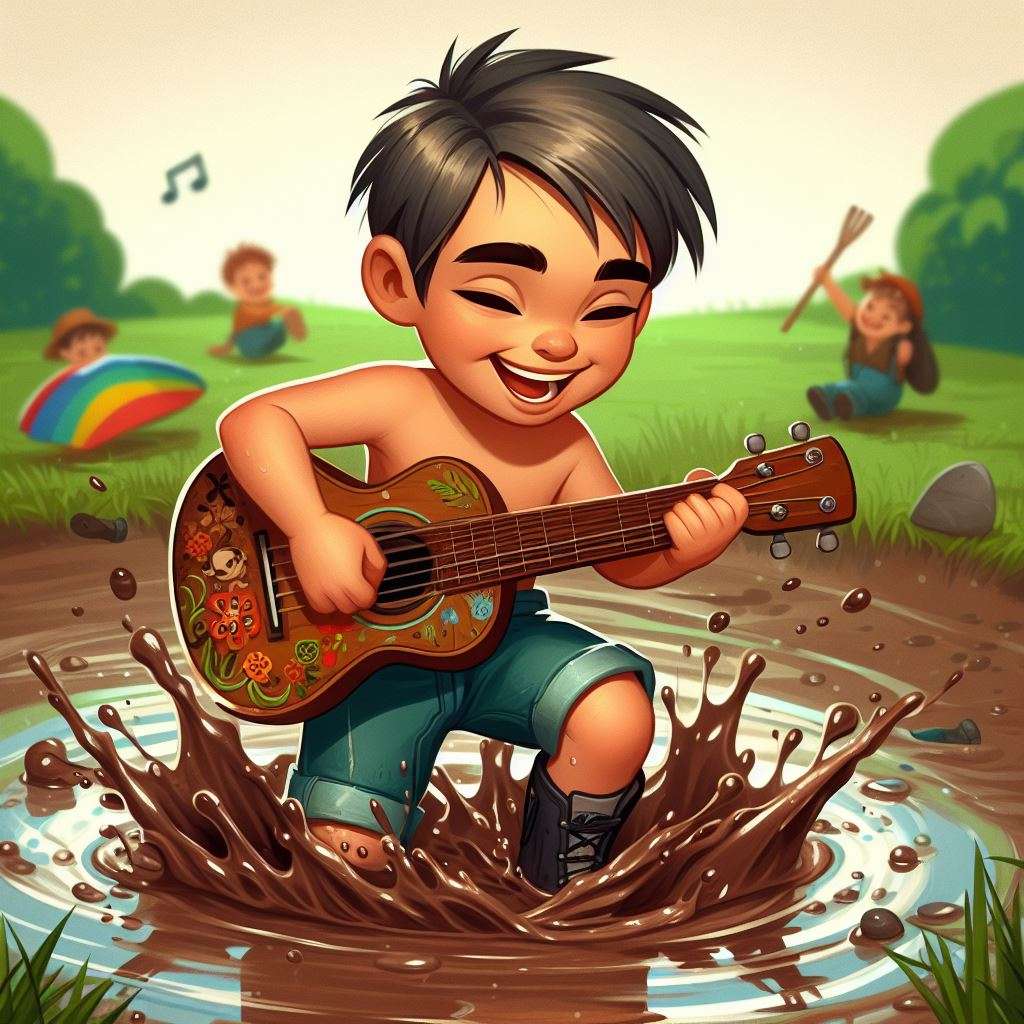Introduction
Look at these kids. They are having the time of their lives, splashing in a mud puddle, faces alight with pure joy. Now look at your kids. Are they hunched over screens, eyes glazed over, and smiles lacking? Do you remember the thrill of discovery, the freedom of the wind in your hair, and the magic of the natural world? It’s time to rediscover it with your kids!

The Lost Wildness
We live in a society that has lost touch with the wild. Unstructured outdoor play has declined dramatically in the past few decades, as parents have become more fearful of dirt, germs, and “stranger danger.” According to a study by the National Trust, the average child spends only four hours a week playing outside, compared to eight hours a day for their grandparents.
This indoor lifestyle has serious consequences for our children’s health and development. Studies have shown that lack of outdoor play can lead to obesity, attention deficit, and lack of vitamin D. On the other hand, outdoor play can foster creativity, imagination, resilience, and a connection to nature. As Richard Louv, author of Last Child in the Woods, puts it: “Nature is not only nice to have, but it’s a have-to-have for physical health and cognitive functioning.”

The Wild Way Manifesto
So how can we get our kids playing outside again? The answer is simple: follow the Wild Way. The Wild Way is a philosophy that encourages parents to take small, achievable steps to get their kids outside regularly. It doesn’t require expensive equipment, fancy destinations, or elaborate plans. It just requires a willingness to let go of structure and embrace the messy joy of unscripted play.
In this article, we will break down the Wild Way into four themes: Backyard Adventures, Neighborhood Explorations, Nature Crafts, and Sensory Play. For each theme, we will provide you with some fun and easy activities that you can do with your kids, as well as some tips and tricks to make them more engaging. We will also include some captivating visuals to inspire you and your kids to get outside and get wild.
Are you ready to join the Wild Way? Let’s get started!
Backyard Adventures: Mud Pie Masterclasses
One of the easiest ways to get your kids outside is to turn your backyard into a playground. And what better way to do that than with mud pies? Mud pies are not only fun to make, but they also stimulate your kids’ senses, creativity, and motor skills.
To make mud pies, all you need is some dirt, water, and a few containers or molds. You can use anything from old pots and pans, to muffin tins, to ice cube trays. You can also add some natural decorations, such as leaves, flowers, rocks, or sticks.
To make the mud, simply mix some dirt and water in a large bucket or tub. You want the mud to be thick and sticky, but not too runny. Then, let your kids scoop, pour, and mold the mud into different shapes and sizes. Encourage them to use their imagination and create their recipes and stories. For example, they can pretend to be chefs, bakers, or scientists, and make mud cakes, mud cookies, or mud potions.
The best part about mud pies is that there is no right or wrong way to make them. Let your kids experiment and have fun. And don’t worry about the mess. It’s all part of the Wild Way!
Neighborhood Explorations: Leaf Symphony Orchestra
Another way to get your kids outside is to explore your neighborhood and discover the wonders of nature. One of the simplest and most enjoyable activities you can do is to collect and play with leaves. Leaves are abundant, colorful, and versatile. You can use them to make art, games, or even music.
To make a leaf symphony orchestra, all you need is a basket or bag, and some musical instruments. You can use anything from pots and pans to spoons, to bells, to whistles. You can also make your instruments, such as shakers, drums, or flutes.
To start, take a walk around your neighborhood and collect different kinds of leaves. Look for leaves that are different in shape, size, color, and texture. Try to find as many varieties as you can. You can also collect other natural items, such as pine cones, acorns, or seeds.
Once you have your collection, head back to your backyard or a nearby park. Then, let your kids sort, arrange, and play with the leaves. Encourage them to use their senses and notice the differences and similarities between the leaves. For example, they can compare the shapes, sizes, colors, and textures of the leaves. They can also try to identify the types of trees they came from.
Next, let your kids create their own musical instruments using the leaves and other items. For example, they can make shakers by filling containers with seeds or acorns, drums by stretching leaves over pots or pans, or flutes by rolling leaves into tubes. They can also use the leaves as percussion instruments, by clapping, snapping, or rubbing them together.
Finally, let your kids form a leaf symphony orchestra and make some music. They can play their instruments individually or together, and create their songs or rhythms. They can also sing along or dance to their music. The possibilities are endless!
Nature Crafts: DIY Bird Feeders
A third way to get your kids outside is to make some nature crafts that can attract and benefit wildlife. One of the easiest and most rewarding crafts you can make is a bird feeder. Bird feeders are not only fun to make, but they also provide food and shelter for birds, and a chance to observe and learn about them.
To make a bird feeder, all you need is some bird seed, some peanut butter, and some items to hold the seed. You can use anything from pine cones, to toilet paper rolls, to plastic bottles. You can also add some string, ribbon, or wire to hang the feeders.
To make the feeders, simply coat the items with peanut butter, and then roll them in birdseed. Make sure to cover the entire surface with seed, so that the birds can easily access it. Then, tie some string, ribbon, or wire around the feeders, and hang them from a tree branch, a fence, or a pole.
To make the feeders more attractive, you can also decorate them with some natural items, such as berries, flowers, or leaves. You can also add some labels or signs to identify the types of birds you hope to attract.
Once you have your feeders ready, sit back and watch the birds come and enjoy them. You can use a bird guide or an app to identify the different species of birds that visit your feeders. You can also take pictures or draw sketches of the birds, and record their behaviors and sounds. You can even name the birds and make friends with them.
Sensory Play: DIY Nature Sensory Bin
A fourth way to get your kids outside is to engage their senses with some natural sensory play. Sensory play is a type of play that stimulates your kids’ senses, such as sight, sound, touch, smell, and taste. Sensory play can enhance your kids’ learning, development, and well-being.
One of the simplest and most versatile sensory play activities you can do is to make a nature sensory bin. A sensory bin is a container filled with different materials that your kids can explore and manipulate. You can use anything from a plastic tub to a cardboard box, to a wading pool.
To make a nature sensory bin, all you need is some filler, some tools, and some items to add. You can use anything from water to sand, to dirt, to snow, as filler. You can use anything from spoons to cups, to tongs, to funnels, as tools. You can use anything from rocks to shells, to leaves, to flowers, as items to add.
To make the bin, simply fill the container with your chosen filler, and add some tools and items. Then, let your kids dig, scoop, pour, and transfer the materials. Encourage them to use their senses and notice the properties and qualities of the materials. For example, they can feel the temperature, texture, and weight of the materials. They can also smell, taste, or listen to the materials.
To make the bin more interesting, you can also add some themes, challenges, or stories to the bin. For example, you can make a beach-themed bin with sand, water, shells, and fish. You can also add some treasure hunt or sorting challenges to the bin. You can also create some stories or scenarios in the bin, such as a fairy garden, a dinosaur land, or a pirate ship.
The Rewards of the Wild Way
By following the Wild Way, you and your kids will experience the rewards of playing outside. You will see positive changes in your kids’ behavior and well-being, such as increased happiness, confidence, and curiosity. You will also enjoy the long-term benefits of a connection with nature, such as environmental awareness, stress reduction, and improved physical and mental health.
But don’t take our word for it. Listen to what some of the families who have embraced the Wild Way have to say:
“We started the Wild Way a few months ago, and we love it! Our kids are more active, creative, and curious. They love making mud pies, collecting leaves, and feeding the birds. They have also learned a lot about nature and wildlife. We have also noticed that they are more calm, focused, and cooperative at home and school. The Wild Way has been a game-changer for our family!” – Fatima, mother of two.
“The Wild Way has been a blast for us and our kids. We have been having so much fun playing outside and trying new activities. We have made some amazing memories and bonded as a family. We have also seen the benefits of being in nature, such as improved mood, energy, and immunity. The Wild Way has been a blessing for our health and happiness!” – Ali, father of three.
“We have been following the Wild Way for a while now, and we can’t get enough of it. Our kids are always eager to go outside and explore. They have developed a love and respect for nature and its creatures. They have also become more creative, imaginative, and adventurous. They surprised us with their skills and talents. The Wild Way has been a source of inspiration and joy for our kids and us!” – Zara, mother of four.
Join the Wild Way Today!
What are you waiting for? Join the Wild Way today and see the difference it can make for your kids and you. All you need is some time, some space, and some imagination. The rest is up to you and your kids. Ditch the screens, embrace the dirt, and let your kids run wild! The benefits are waiting just beyond the back door.
We hope you enjoyed this article and found it helpful. If you did, please share it with your friends and family, and leave us a comment below. We would love to hear from you and your Wild Way experiences. And don’t forget to check out our other articles and resources for more ideas and inspiration.
Thank you for reading and happy playing! 🌿
